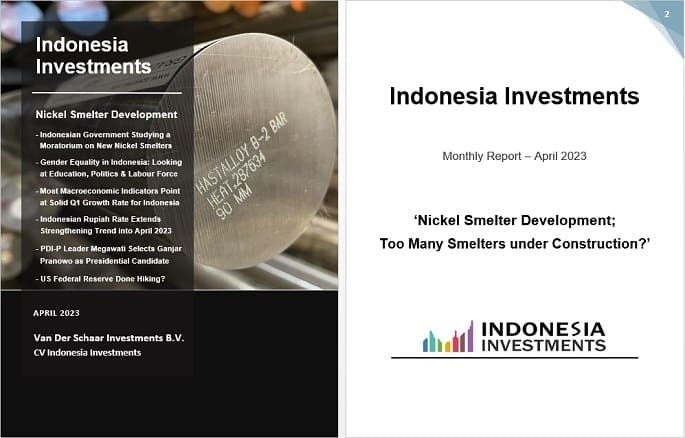Taking a Look at Investment in Nickel Production and Nickel Smelting Facilities in Indonesia
If we take a look at Indonesian companies that went public in 2023 (becoming listed companies on the Indonesia Stock Exchange, or IDX), we see a couple of companies focused on nickel production, or nickel smelting and refining that made their trading debuts in Indonesia.
Is this a sign that there now exists an improved environment for these nickel-related activities, hence companies are looking for fresh funds to invest in production or business expansion?
But first back to basics. What is nickel and why is it important? Nickel is a metal with outstanding physical and chemical properties that make it an essential material in hundreds of thousands of products.
Nickel is primarily sold as refined metal or ferronickel. Most of this is used in alloying to produce stainless and heat-resisting steels. Examples of products that have nickel content include batteries, coins, armour plating, nails, pipes, mobile phones, kitchen wares, medical equipment, TV sets, and electric stoves. In terms of sectors, it are in particular construction, automotive and consumer goods that make use of stainless steels.
Another large part of nickel production goes to the super-alloys or nonferrous alloys, which are popular because of their corrosion resistance (and are therefore used in the aerospace industry for turbine blades, discs, and a number of other critical parts of jet engines as well as land-based combustion turbines, such as at electric power generation stations).
Moreover, as the world is increasingly supporting climate-neutrality, companies are reducing operating emissions, while boosting investment in low-carbon metals such as copper, cobalt, nickel, and lithium. This also includes rising investment in electric vehicles. And nickel is a key element in the lithium-ion batteries that are used in the electric vehicles.
Nickel deposits come in two forms: (1) sulfide and (2) laterite. About 60 percent of the world’s known nickel resources are laterites, the remainder are sulfide deposits (although we have also seen publications that put the ratio at 70-30 percent). The main benefit of sulfide ores is that they can be concentrated using a simple flotation technique, while in the case of nickel laterites the rock must be completely molten or dissolved to enable the nickel extraction. As a result, laterite projects need higher capital costs, and are – generally – more energy and CO2-intensive than the sulfide projects.
[...]
This the introduction of the article. Read the full article in our April 2023 report (an electronic report). This report can be ordered by sending an email to [email protected] or a message to +62.882.9875.1125 (including WhatsApp).
Take a glance inside the report here!
Price of this report:
Rp 150,000
USD $10,-
EUR €10,-

